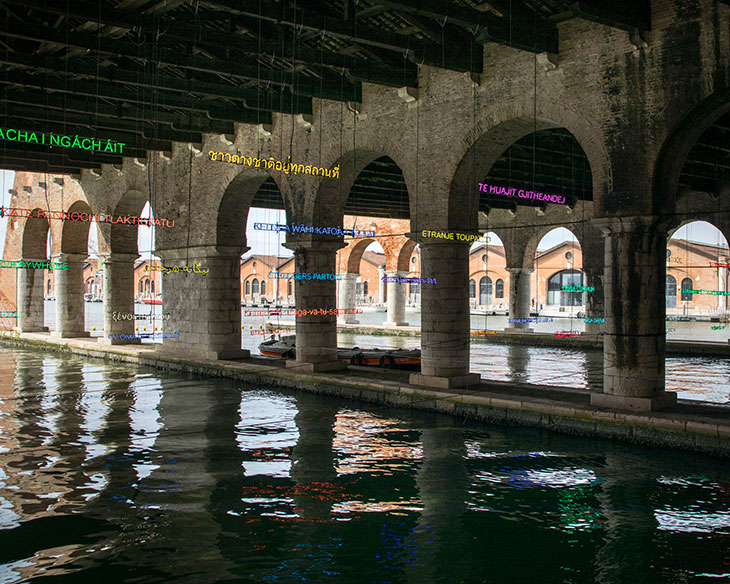
The 60th International Art Exhibition revolves around the theme “Foreigners Everywhere,” a concept originating from works created by the collective Claire Fontaine. These works, neon sculptures displaying the phrase in multiple languages, stem from the activism of the Stranieri Ovunque collective in Turin, Italy. Now showcased at the Arsenale’s Gaggiandre, the installation features over fifty languages, including indigenous ones. Against the backdrop of global crises surrounding migration and identity, “Foreigners Everywhere” highlights the omnipresence of foreigners and the universal sense of displacement.
ART
While “Foreigners Everywhere”, curated by Adriano Pedrosa, attempts to bring together diverse experiences under the umbrella term of “outsider,” it runs the risk of oversimplifying the complexities of identity. By categorizing artists who identify as queer, indigenous, self-taught, or from the Global South as a homogeneous group, the exhibition may overlook the nuances and individualities within each community. However, despite this limitation, the show presents a selection of captivating artworks that offer unique perspectives and narratives. Here are our top picks of must-see artists within the exhibition.
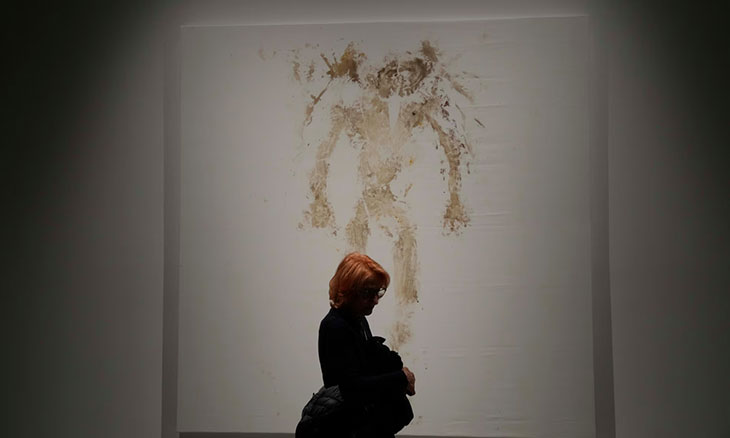
TERESA MAGOLLES
Teresa Margolles confronts the theme of mortality, focusing on the impact of death within Mexico and extending to broader global contexts. In her piece “Tela Venezuelana” (2019), Margolles delves into the reality of forced migration along the Venezuela-Colombia border. This artwork features a large white cloth bearing the stark imprint of a human silhouette, stained with dried blood. The blood, collected from a young Venezuelan man fatally wounded at the Táchira River in Cúcuta, Colombia, serves as a symbol of the violence and suffering endured by migrants. By draping the cloth over the man’s body during autopsy, Margolles captures not only a haunting portrait of his tragic fate but also bears witness to the broader brutality faced by countless others on similar journeys.
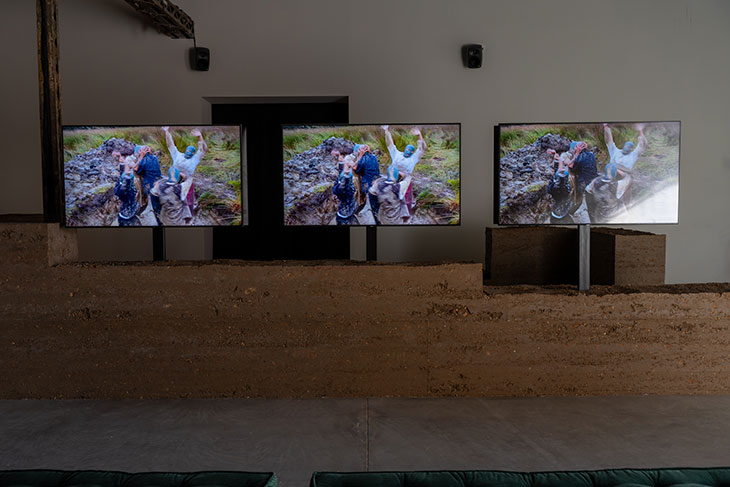
EIMEAR WALSHE
“ROMANTIC IRELAND”, showcased in the Irish Pavilion, uniquely blends video installation and an operatic soundtrack, all within an earth-built sculpture. Created by artist Eimear Walshe and curated by Sara Greavu, the video depicts dramatic encounters across centuries, set in an abstracted ruin undergoing construction and demolition. It explores the ancient practice of earth-building and reflects on its local significance amidst contemporary demolishing evictions in Ireland. The accompanying soundtrack narrates an eviction scene against a backdrop of a historic radio broadcast. The installation captures characters navigating fractured relations, symbolized by their costumes and masks. Amid Ireland’s housing crisis, “ROMANTIC IRELAND” intriguingly explores generational dynamics and societal change.
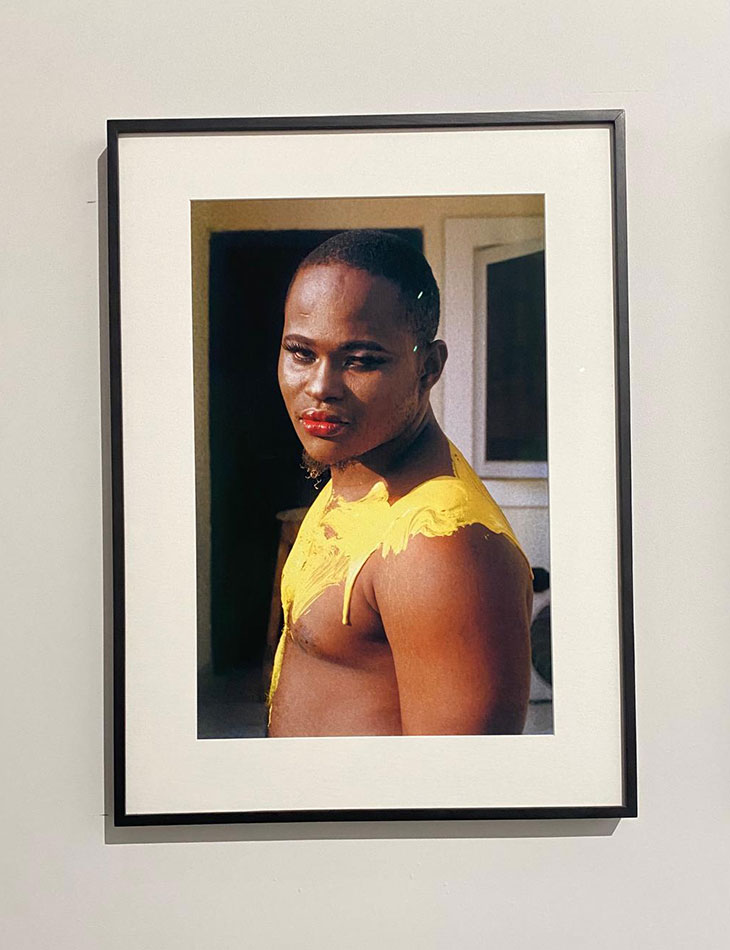
SABELO MLANGENI
Photographer Sabelo Mlangeni directs his lens towards the unexpected, highlighting beauty, affection, and vulnerability in his work. His notable projects like Country Girls (2003–2009), Black Men in Dress (2011), and The Royal House of Allure (2020) shift the focus away from violence, instead portraying queer individuals in moments of repose and celebration. Mlangeni’s approach involves building trust and intimacy with his subjects, often spending considerable time with them to capture their essence and broader life experiences.

LAUREN HALSEY
Lauren Halsey is an artist who redefines the intersection of architecture and community. At the Biennale Arte, Halsey presents a new installation at the end of the Arsenale, featuring a striking series of monumental columns inspired by the vibrant essence of everyday life in South Central Los Angeles. While Halsey has previously crafted columns, often adorned with inscriptions or hand-painted imagery, this rendition takes on a new dimension. By carving the capitals with the portraits and narratives of individuals from her neighborhood, she pays homage to their invaluable contributions. This juxtaposition of ancient architectural forms with contemporary narratives serves as a potent political statement, affirming the significance of the Black and African American diaspora alongside Western architectural traditions.
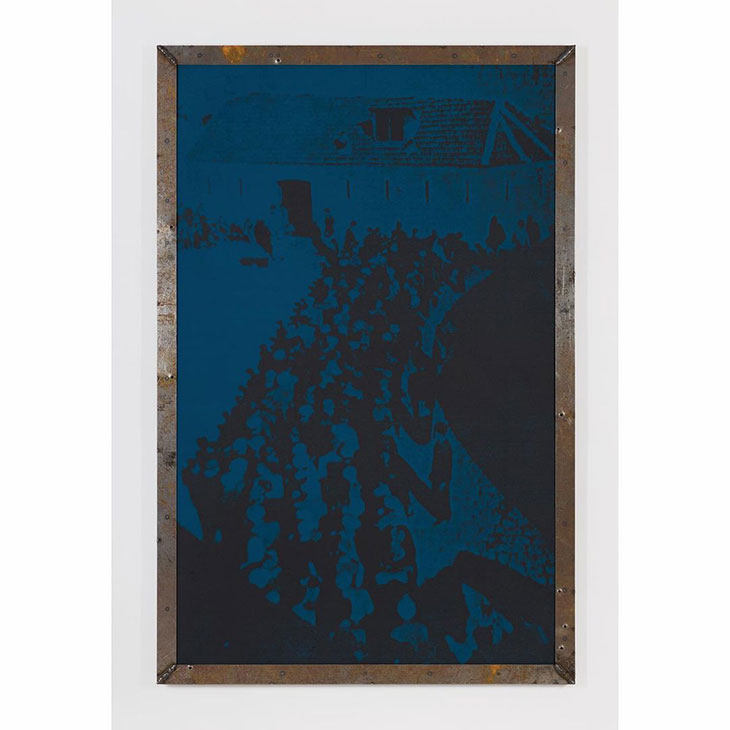
DARJA BAJAGIC
Darja Bajagic has been chosen to represent Montenegro at the 60th International Venice Biennale with her project “It Takes an Island to Feel This Good,” curated by Ana Simona Zelenovic. This exhibition critically engages with the culture of collective memory and our connection to shared historical heritage. Through painting and sculpture, Bajagic explores the complex history of the Montenegrin island of Mamula, drawing from two years of research in Montenegrin state archives. Her visual compositions merge archival material with symbolic interventions, reflecting on themes of power and authority. Inspired by Italian philosopher Giorgio Agamben‘s analysis of modernity and the concept of the concentration camp as a hidden matrix of politics, Bajagić’s project delves into the implications of the camp as a space where law is suspended.
Прикажи ову објаву у апликацији Instagram
ROMUALD HAZOUMÈ
The Benin Pavilion at the Venice Biennale confronts the Eurocentric art world with a reminder of colonial atrocities and the resilience of the Beninese people. Romuald Hazoumè‘s striking sculpture, fashioned from plastic petrol tanks, serves as the centerpiece, symbolizing the nation’s painful past. Visitors are immersed in a solemn ambiance as they navigate through the dimly lit space, surrounded by the haunting presence of the tanks. The pavilion challenges conventional notions of strength and fragility, prompting contemplation on the interconnectedness of history, feminism, and human empathy. As curator Azu Nwagbogu eloquently expresses, the pavilion serves as a conduit for collective introspection, inviting visitors to reconnect with their humanity through shared narratives of history and feminism.
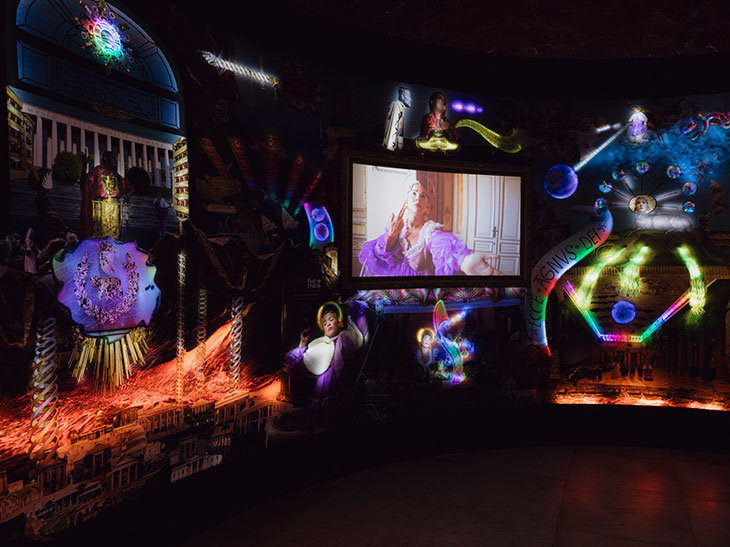
GUERREIRO DO DIVINO AMOR
The Swiss-Brazilian artist Guerreiro do Divino Amor‘s pavilion at the Biennale is a whirlwind of bold ideas and playful aesthetics. Titled “Super Superior Civilizations,” the installation, at the Pavilion of Switzerland, cleverly intertwines Swiss identity, Greek mythology, and the artist’s unique cosmology. Visitors are treated to a sensory feast, with high-tech visuals juxtaposed with campy architectural ruins and surreal imagery. The centerpiece, “The Miracle of Helvetia,” is a mesmerizing video experience where viewers lie back and gaze at a dome-shaped screen, witnessing a Greek epic infused with Swiss symbolism. Divino Amor’s pavilion is a thought-provoking exploration of nationalism and otherness, delivered with a dose of humor.
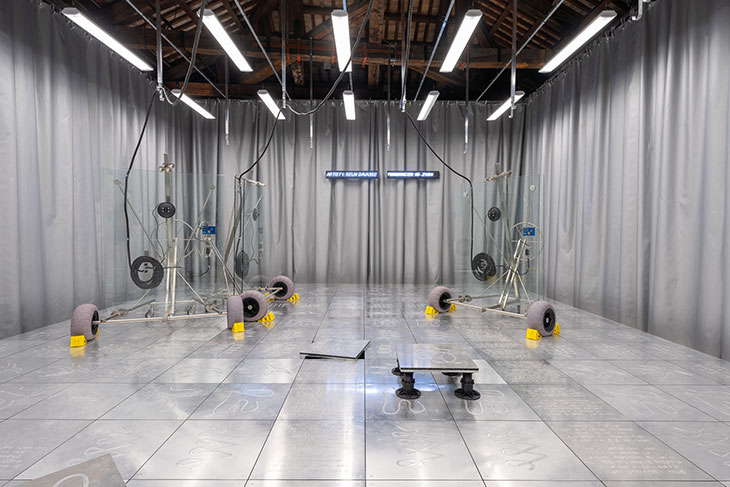
ANDREA MANCINI & EVERY ISLAND
As part of the Luxembourg Pavilion, The “Comparative Dialogue Act” project by Andera Mancini and Every Island collective, curated by Joel Valabrega, offers a refreshing take on group exhibitions within the context of the Biennale’s national pavilions. Departing from the usual crowded and sometimes disjointed displays, this pavilion reimagines the space as a dynamic steel stage, where performances unfold gradually over the exhibition’s duration. Each performance artist is given specific instructions and boundaries, with their contributions building upon and interacting with those of their predecessors. The innovative concept turns the pavilion into a collaborative platform, blurring the lines of authorship and inviting viewers to witness the evolution of artistic dialogue. Selin Davasse‘s inaugural performance, skillfully challenges traditional female mythologies. Unlike the static showcases often found in Venice, the Luxembourg pavilion is a work in progress, promising ongoing exploration and experimentation.
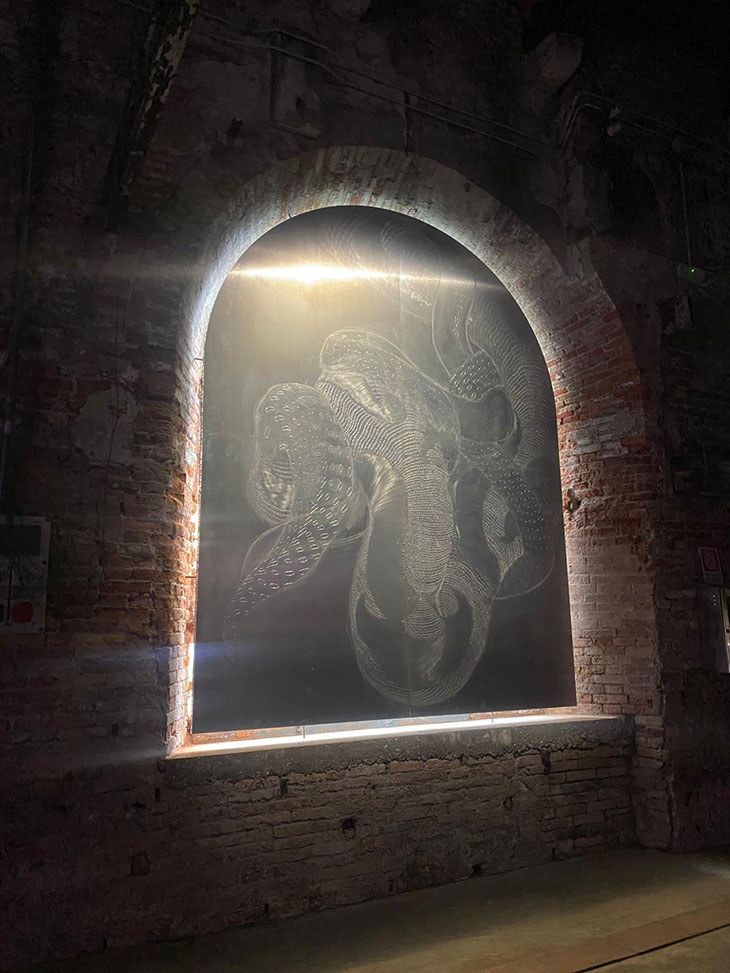
WANGSHUI
WangShui explores the concept of identity by creating art that transcends traditional forms. Through video, installation, and painting, they explore fluid states of materiality and consciousness. Their latest installation features large aluminum paintings and an LED video sculpture, investigating the migration of matter and form across continents. By manually anodizing aluminum panels with cochineal, a red pigment from Mexico, WangShui blurs the lines between human and machine processes.
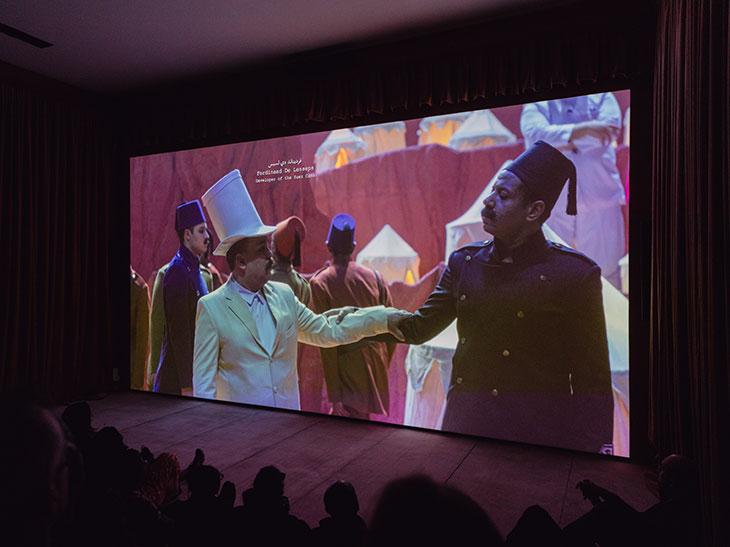
WAEL SHAWKY
Wael Shawky‘s latest cinematic work, Drama 1882, commands attention at the Egyptian Pavilion for its bold examination of history. Against the setting of Egypt’s occupation, the film explores the nationalist fervor of the 1879–82 Urabi Revolution, whose violent outcome inadvertently ushered in British rule. Shot in a historic open-air theater in Alexandria, Shawky’s film combines fact and fantasy. The film is complemented by sculptural elements from its elaborate sets, enhancing the immersive experience.
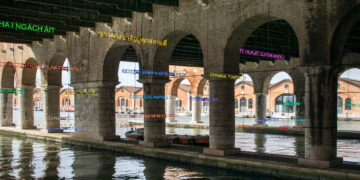













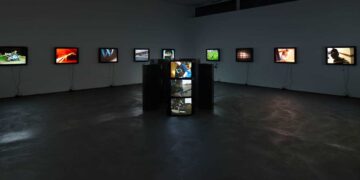
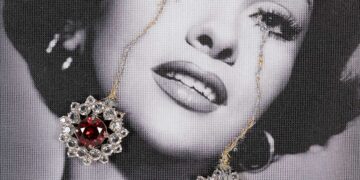
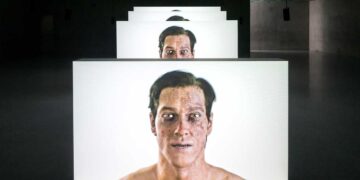



Alright, so if you’re hitting up the Venice Art Biennale this year, you absolutely cannot skip the “Foreigners Everywhere” exhibition. It’s literally a must-see! Curated by Adriano Pedrosa, this show is stirring up all kinds of conversations with its powerful theme that resonates deeply in today’s global landscape. We’re talking about an array of works that reflect on identity, migration, and the ever-persistent feeling of being an outsider—pretty timely, right?
Imagine stepping into the Arsenale’s Gaggiandre and being surrounded by neon sculptures in over fifty languages—how cool is that? This installation isn’t just art; it’s a statement, screaming the message of universal displacement and the omnipresence of ‘foreigners’ in a world that’s more connected yet divided than ever.
And the lineup? It’s stellar. From Teresa Margolles’ poignant exploration of mortality and migration to Lauren Halsey’s epic columns that blend community with architecture, each piece in this exhibition promises a unique narrative and a deep dive into pressing global issues. Plus, the blend of different artistic mediums—from sculpture and photography to installations—ensures there’s something that will strike a chord with everyone.
Seriously, if you’re into art that not only looks stunning but also makes you think and feel, this is one exhibit you can’t miss. Whether you’re a seasoned art critic or just someone curious about the creative world, the depth and diversity of “Foreigners Everywhere” will leave you enriched, educated, and maybe even a bit emotional. So, make sure it’s on your Biennale bucket list!